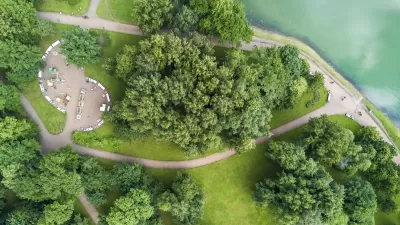A variety of new tools can help with community engagement and data collection and analysis for park planning projects.

Due to the COVID-19 pandemic, many community meetings shifted online in the past two-plus years. While not ideal, virtual engagement does offer certain benefits, such as making it easier for some members of the public to participate in meetings from the comfort of their homes without having to travel or arrange for childcare. In this article, park planner Clement Lau discusses the use of the latest tools for community engagement, and data collection and analysis, focusing on the following topics:
- Map-based Surveys
- Live Polling
- Live Notetaking
- Use of Data from Fitness Apps
- Use of Cellphone Generated Human Mobility Data
Nothing can replace the connections and opportunities for relationship-building that in-person meetings and other activities provide. However, there are tools that can help make virtual meetings more engaging, interactive and even fun. Also, online surveys can be much more relatable and visually appealing (than just a standard list of questions) when interactive maps, photos and graphics are included. In addition, there are now sources through which accurate mobility data may be acquired to measure park access, usage, and visitorship without conducting labor- and time-intensive studies at individual park sites.
While there are certainly limitations and costs associated with the use of technology and the above tools and data sources, it is becoming increasingly important that park planners add tech-savviness to good old-fashioned customer service in order to better understand and meet the needs of communities.
FULL STORY: Tech-Savvy Park Planning

Trump Administration Could Effectively End Housing Voucher Program
Federal officials are eyeing major cuts to the Section 8 program that helps millions of low-income households pay rent.

Planetizen Federal Action Tracker
A weekly monitor of how Trump’s orders and actions are impacting planners and planning in America.

Ken Jennings Launches Transit Web Series
The Jeopardy champ wants you to ride public transit.

New Mexico Aging Department Commits to Helping Seniors Age ‘In Place’ and ‘Autonomously’ in New Draft Plan
As New Mexico’s population of seniors continues to grow, the state’s aging department is proposing expanded initiatives to help seniors maintain their autonomy while also supporting family caregivers.

USDOT Waters Down Self-Driving Car Regulations
The agency is reducing reporting requirements for autonomous vehicles and cars with self-driving features, prompting concern among safety advocates who say transparency is essential to the safe deployment of AV technology.

‘Minnesota Nice’ Isn’t so Nice When You Can’t Find a Place to Live
The Economic Development and Housing Challenge Program can help address the scourge of homelessness among Indigenous people.
Urban Design for Planners 1: Software Tools
This six-course series explores essential urban design concepts using open source software and equips planners with the tools they need to participate fully in the urban design process.
Planning for Universal Design
Learn the tools for implementing Universal Design in planning regulations.
Heyer Gruel & Associates PA
Ada County Highway District
Institute for Housing and Urban Development Studies (IHS)
City of Grandview
Harvard GSD Executive Education
Toledo-Lucas County Plan Commissions
Salt Lake City
NYU Wagner Graduate School of Public Service





























